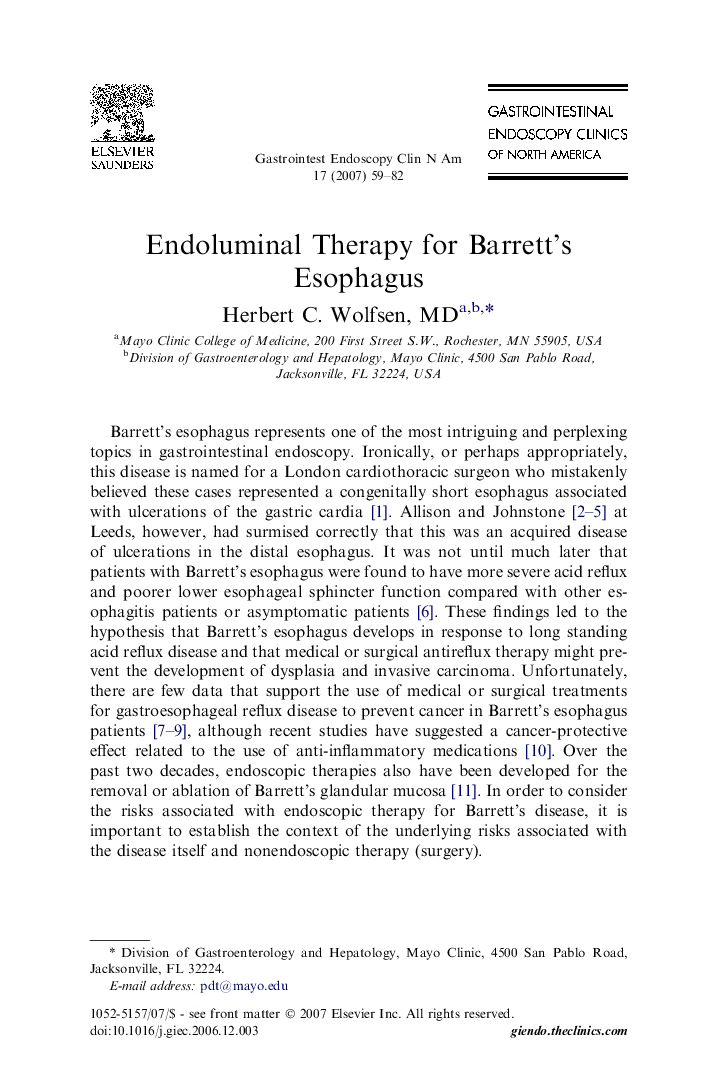| Article ID | Journal | Published Year | Pages | File Type |
|---|---|---|---|---|
| 3310807 | Gastrointestinal Endoscopy Clinics of North America | 2007 | 24 Pages |
Abstract
This article reviews methods to minimize the complications associated with endoscopic therapy for patients with Barrett's esophagus. To place this discussion in context, the natural history of Barrett's esophagus and the risks associated with progression to dysplasia and invasive carcinoma are reviewed. Operative esophageal resection traditionally is recommended for patients with Barrett's high-grade dysplasia and early carcinoma, and these surgical risks also are reviewed. Finally, all currently approved and commercially available methods for endoscopic ablation and resection of Barrett's disease are categorized according to their application methods of ablation: focal ablation, field ablation, and mucosal resection. The clinical experience with these devices is reviewed with their associated adverse events and complications. Caveats, concerns, and recommendations are discussed to help minimize the complications associated with the use of these important technologies that hold the promise of removing or destroying Barrett's disease to prevent the development of invasive carcinoma.
Related Topics
Health Sciences
Medicine and Dentistry
Gastroenterology
Authors
Herbert C. MD,
